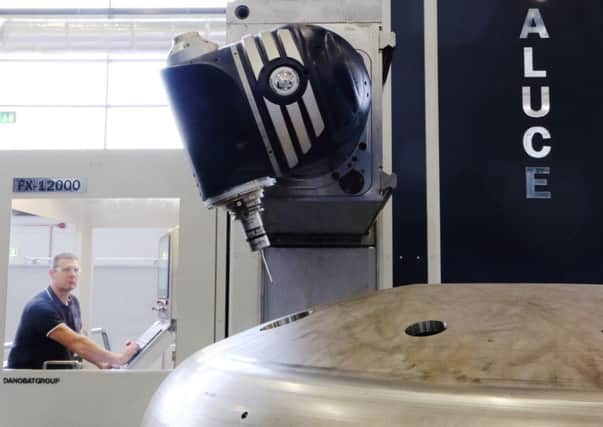Business Monthly: Why we must seize the chance to go nuclear


In January 1993, the Commons Select Committee for Trade and Industry urged ministers to consider how investment in new nuclear power could be delivered. I chaired hearings that revealed we needed the development of new build in nuclear generation in the UK as well as a prudent use of British coal burnt to generate electricity.
But the lure of gas was irresistible. Michael Heseltine, then president of the Board of Trade, rejected our advice; the UK stood down our nuclear engineers and electricity companies sped toward unbridled development of gas-fired power stations, creating a short term, high risk energy policy.
Advertisement
Hide AdAdvertisement
Hide AdWe now face a potential energy gap, difficulties in meeting our legally-binding international environmental obligations and unwisely embarking on a very expensive nuclear investment at Hinkley Point. This is now in doubt with the developments at EDF over the last few weeks, but if it does go ahead it will be constructed by a company that has never met the basic rules of production. And to boot, the building of this £24bn-plus station will have little or no British content.
So is there a British resolution to the British energy crisis?
Could we produce cost effective nuclear power from stations that have a large British content based on UK intellectual property that could be exported, as well as meet environmental targets?
The answer is yes. And we could be the global manufacturing centre for the new generation mini-nuclear reactors.
Advertisement
Hide AdAdvertisement
Hide AdThese SMRs (Small Modular Nuclear Reactors) have been in naval service for some time, but not in civil nuclear power generation.
There is no practical reason why SMRs cannot come ashore. A UK Government-funded report suggested there was potentially a “very significant” global market for hundreds of SMRs (65-85 gigawatts) by 2035 with dozens of SMRs (7GW) sited in the UK. The market is worth an estimated £250-400bn.
Just a small share of that market has the potential to be a huge boost to the chancellor’s ‘Northern Powerhouse’ by doubling the manufacturing base of South Yorkshire, which stands at £22bn.
In the vanguard of SMR development is the Nuclear Advanced Manufacturing Research Centre in Sheffield. Its £40m-plus investment in real time nuclear manufacturing and research is pioneering.
Advertisement
Hide AdAdvertisement
Hide AdChief executive Mike Tynan says small modular reactors have not been built anywhere in the world but “they provide the best hope for boosting British manufacturing through energy policy.”
We need ministers to form partnerships with the private sector to deploy the skills of our engineers at the NAMRC and to produce the first British-built SMR.
That could and should lead to the UK establishing the world’s first SMR production company, rolling-off for that £400bn global market factory assembled reactors comprising UK manufactured components.
Action is needed urgently. Gordon Waddington, author of a report for the National Nuclear Laboratory, has urged development of SMRs.
Advertisement
Hide AdAdvertisement
Hide AdThe technology has a bright future, he said, because of the demand for low-carbon electricity. But the next two or three years are critical if they are to be deployed widely in the next decade, and the UK has a once-in-a- generation chance to be at the heart of it.
“The window of opportunity for the UK is there but it will not be open for ever,” Waddington said.
We need to back British engineers and British manufacturing
Decisions by EDF in the next few weeks could open the window of opportunity for British built nuclear reactors even wider.
Meanwhile,the UK government has launched the first stage of a competition to identify the best value small modular reactor designs, writes David Walsh.
Advertisement
Hide AdAdvertisement
Hide AdIn the Budget it also said it would allocate at least £30m for a research and development programme to develop nuclear skills capacity.
It comes after plans were announced in November to invest at least £250 million over the next five years in an “ambitious” nuclear research and development program.
The Department of Energy and Climate Change launched the competition by publishing a request for expressions of interest.
The NAMRC in Rotherham is working with two companies on reactor designs.
Advertisement
Hide AdAdvertisement
Hide AdLast year it signed a deal with US company NuScale and in March it agreed a collaboration deal with US giant Westinghouse.
The Nuclear AMRC will try to find ways to cut the cost of producing pressure vessels, one of the largest and most demanding parts of any reactor.
Owned by Sheffield University, it is believed to be the only R&D centre in the world with machine tools and welding equipment large enough to work on full-scale parts.
Small modular reactors can fit on a lorry and be linked to create the power of a full-size nuclear power plant with a fraction of the building costs.
Advertisement
Hide AdAdvertisement
Hide AdBut it will be at least 10 years until the first SMR is up and running
The Welsh government is positioning Trawsfynnedd, which has an existing nuclear licence, as a development site.
An NAMRC spokesman said the first one could cost up to £10bn. But production costs should drop significantly one they are being made in numbers.